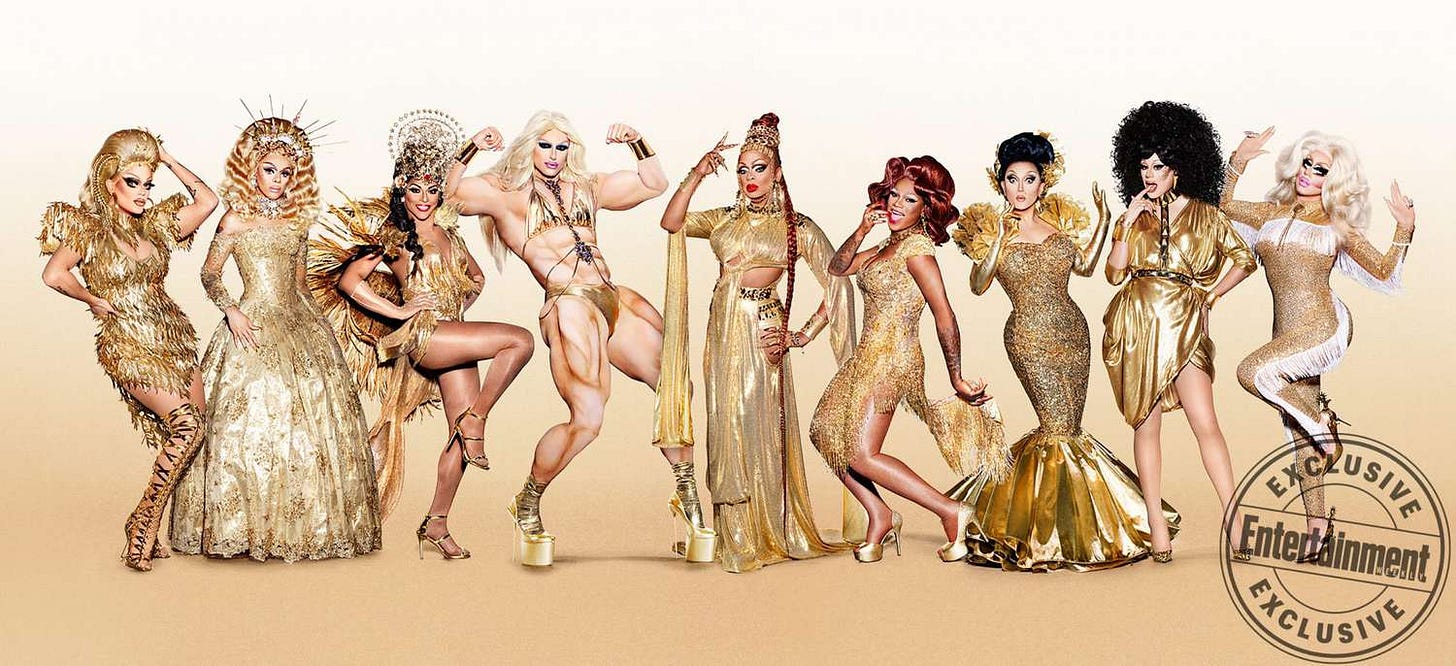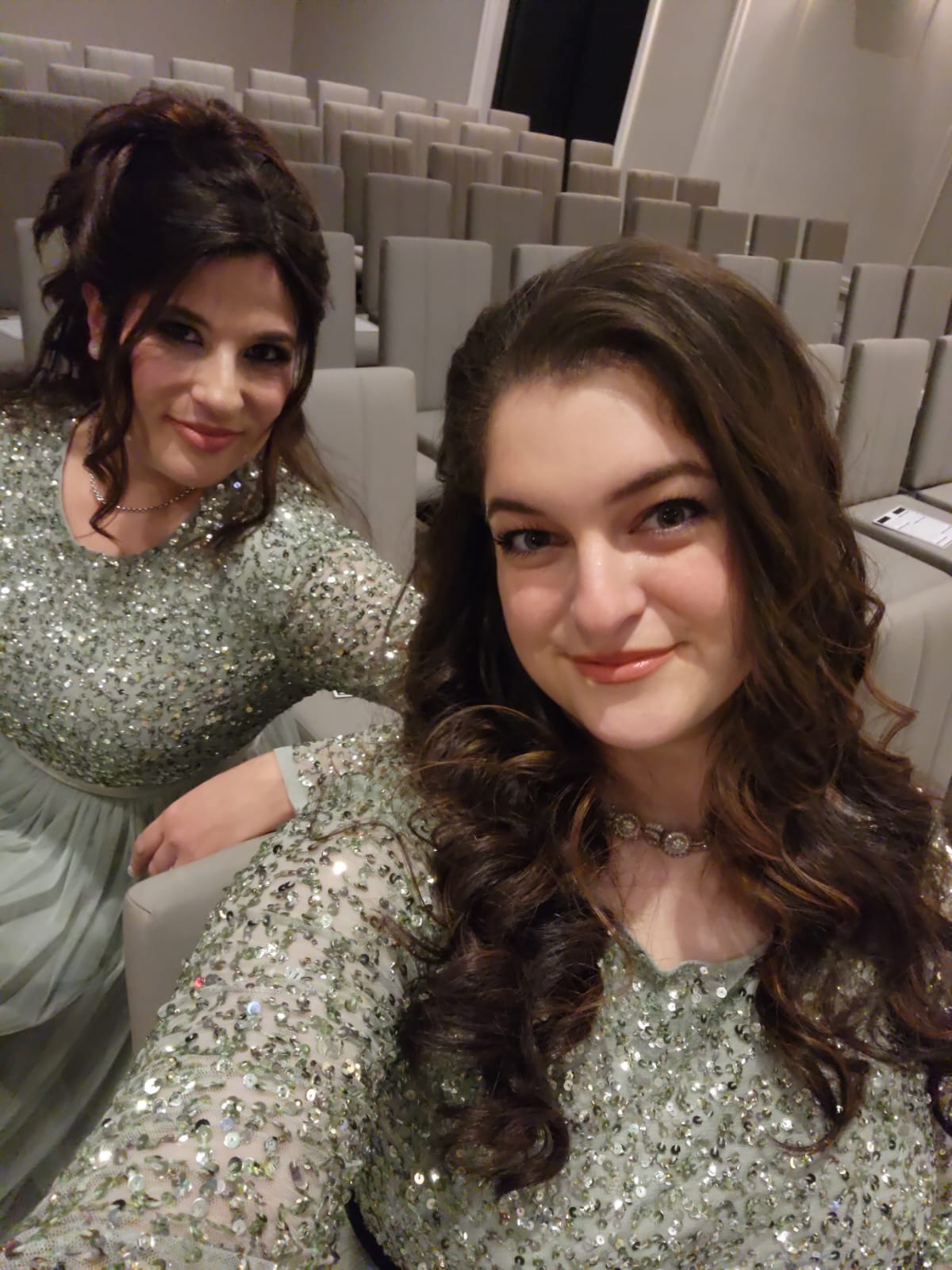How I Learned to Stop Worrying and Love My Shaitel, Thanks to RuPaul's Drag Race
I'm sorry darling, how did YOU get here?
A married Modern Orthodox Jewish woman, a WWE Diva and a drag queen walk into a bar. Are they sisters? Cousins? Long lost BFFs?
They should be! They aren’t, but they should be!
As a Jewish suburban mom who loves RuPaul’s Drag Race, I really wish more women in my community embraced this iconic show.
As a child, one of the ways we differentiated among the many (many) Modern Orthodox synagogues was based on whether or not the ladies in attendance wore hats with their outfits. At our shul, “Shabbos clothes” were on par with what you’d wear to a cocktail lunch. At my aunt’s shul, the ladies wore the most cutting-edge fashion commercially available – all modest, of course.
And then there were the shaitels.
A religious Jewish woman begins covering her hair the night of her wedding, when hair becomes a private feature, reserved only for her husband. Some women use elaborately-styled scarves, some use berets. In Modern Orthodox circles, many women wear shaitels, or wigs.
A Jewish woman’s shaitel is more than just a head covering. It’s a statement. It’s a persona. It’s an identity.
And they used to terrify me.
Real human hair wigs cost upwards of a thousand dollars. There are professional shaitel machers, who sell them out of storefronts or their basements. There are full wigs, half wigs, blended wigs. Women with unique hair colors will spend a fortune matching their shaitel color to their own hair.
Shaitels can also be heavy, hot and really, really unconvincing. (Sometimes intentionally, so that people will know it’s not your actual hair, but not in my mother’s house.)
Growing up, these weren’t things I saw reflected in pop culture. Representation of Jews in the media are generally reserved for either the extremist sects of Chasidim, or the secular counterparts who scorn them.
(Though The Nanny was a great place to get some quality Jews in drag.)
I didn’t need to see people coming up against their religion and neuroses; I needed to see people living their lives around the social norms and community rules that they chose for themselves, where religion is a cause but not necessarily an effect.
And where there’s a lack, we find other ways of finding ourselves.
I didn’t discover RuPaul’s Drag Race right away. My gateway drug was Total Divas in 2013, the E! reality show about female wrestlers in WWE. Every single cast member was in full glam, all while flipping and slapping and maneuvering. They had hair extensions, stage makeup and tailored clothes. They had signature moves, signature outfits, signature mic styles.
The show put their efforts on display and for me it was like, Yeah, I know what that is: That’s performative femininity. Designed for the male gaze, but also a language among women. One by which to recognize and appreciate the level of effort involved, one that lets us use beauty to achieve status.
Another turning point for me was a (pretty boring) reality show called Teyana & Iman in 2018, which followed Teyana Taylor and Iman Shupert. At the time, lace fronts were just arriving in the shaitel zeitgeist – they had been mostly a feature of wigs intended for Black women, while Jewish women used tricks like bangs and side swoops to hide a hard hairline. But when I saw Teyana wearing an orange wig, and then Iman taking it and plonking it on his head and it looked so real to me (don’t judge), I realized that there were POSSIBILITIES.
That I didn’t have to fear my future shaitels. That they just might work for me.
I came to RuPaul’s Drag Race: All Stars in 2018 and I was hooked. Again, I encountered a heightened femininity that was also created for the male gaze, but in parody form. It was still for men, but not the kind I knew. Sure there are queens who could pass as women in society – but that’s not the point. The point is to have a point of view, to treat being a woman like an art form. You don’t need a gimmick to succeed as a drag queen (though it helps), but you do need to be committed to the transformation and appreciate its potential.
Here, I suppose, is where the disclaimer must be stated. Yes, I am deep in the Drag Race subreddit. Yes, I understand that this art is not being created for me. But I am one of the proud suburban moms who just absolutely lives for it.
And you know what? Now that I’m married, I, too, have been known to wear a wig with ludicrously voluminous hair that could have never grown out of my own head. I, too, put on a full face of makeup to cavort with other full faces of makeup.
I may have never glued lace to my forehead, but I’ve learned a hell of a lot about hairlines. And while drag queen makeup is highly specific to feminizing features that I don’t need feminized (see: the Great Contour Wave of 2016), I learned a hell of a lot about makeup and what is possible.
Not to mention: when you see a person with rippling biceps, a chiseled jawline and a buzz cut turn into the most beautiful woman you’ve ever seen; or when you see a plus size person throw on a corset and strut like a glamazon ready for the runway, it opens your mind a little more than it was before. It makes you realize that your own physical flaws aren’t the dealbreakers you thought they were. It makes you realize that standards of beauty are made to evolve and change, from age to age and from body to body.
So this is my wish for the shaitel-wearing women who might be put off by the idea of a man in a wig:
Give it a shot. You won’t regret it.








